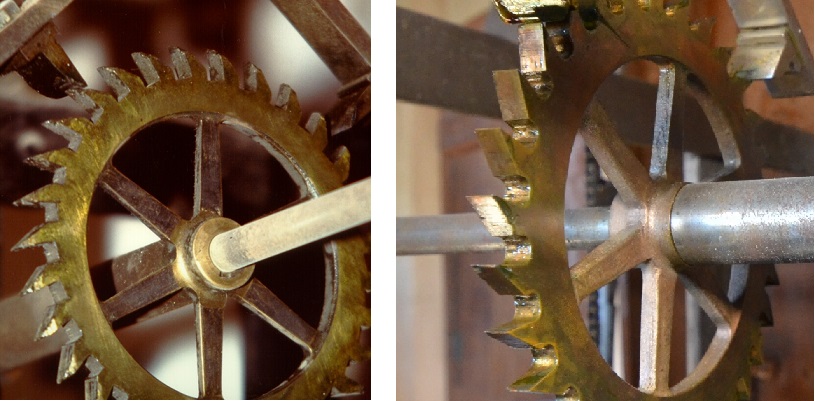The clock of Villa Medicea di Poggio a Caiano

An important restoration project at the summer residence of the Medici family.
Prato - 26 May 2017 - Ugo Pancani
At the end of the 20th century, a group of students and teachers from the clock-making department of the Leonardo da Vinci Technical Institute in Florence passed through the gates of Villa Medicea di Poggio a Caiano. They were armed with crates and tools. Impatiently, they climbed the staircase which leads to the tower which houses a beautiful pendulum clock. They had been sent by the Florentine authority for Artistic Heritage and the town council of Poggio a Caiano. Their task was to restore and preserve the Villa’s clock. With the help of their teachers, the students began to analyse the general state of the movement, making comments, and putting forward potential solutions to rectify the various defects in the mechanism.
In its exposed position, the clock had suffered over the years, badly affected by damp, severe variations in temperature and atmospheric pollution. Close examination revealed that many parts of the mechanism had suffered, especially the impulse levers of the anchor. Apart from rust and worn down gear pivots, the largest problem was with the escapement, the very heart of the mechanism, since nearly all of its teeth were totally ruined.
Analysis of the movement revealed its characteristics: flat rods for the supporting plates, two wheel trains, one for the time with a Graham deadbeat escapement and one for the chiming with a countwheel, striking the hour only, with a repeating chime (a sort of reminder for inattentive people). It was weight driven and the time train would run 30 hours without winding.
The clock was carefully removed from the tower and completely dismantled. The crates were slowly filled with the various components that had been painstakingly labelled and packaged ready for the journey back to the Institute’s workshop. Once there, the various parts of this great clock were cleaned, removing the rust and dirt that had accumulated over hundreds of years. However, the main difficulty would be the reconstruction of the escapement, a task that would require the help of many different departments in the Institute. The various components were individually restored and then reassembled until the mechanism was complete and lubricated. It was then reset and relocated back to its original home at the Villa.
However, during the restoration project it had been necessary to consult historic documents relating to the history of the clock, both at the Villa and in the State Archive in Florence. This research revealed that the clock that had been restored, was not the Villa’s original timepiece. It appeared that the mechanism may have come from another location altogether, Villa di Lappeggi near Antella.
It seems that following the death of the last occupant to be appointed by the Medici family, in 1711, this particular villa fell rapidly into a state of disrepair and was put up for auction. Documents exist which record the transport of the metal decorations which now embellish the clock tower at Poggio a Caiano from Villa di Lappeggi. Since it is known that efforts were made to salvage as much as possible from Villa Lappeggi and no there are no traces of what happened to its clock, it may be assumed that along with decorations, the clock mechanism was also moved and relocated to Villa di Poggio a Caiano.
This hypothesis has been backed up by certain technical characteristics of the mechanism. It would appear that the clock dates from the end of the 17th or the beginning of the 18th century. This can be seen by the use of a pendulum for regulating the timekeeping, and the handcrafting of the points of the teeth to make them “rounder”, a technique which was very common from the middle of the 17th century until the end of the 18th century.
Further proof comes from 16th century descriptions of the Villa’s original clock. These speak of a verge escapement with foliot regulator. However, the restored mechanism shows absolutely no sign of ever having been retrofitted with a new pendulum regulator, as is common with older clocks. This demonstrates once and for all, that this cannot be the original clock.
Some years after the restoration an electrically powered device was attached to the movement to automatically return the weights, and following this, while maintaining the original position of the movement, an electronic device, which indicates the time, was placed on the hand shaft for practical purposes.

Now the clock is in excellent condition, protected by a wooden structure inside the clock tower of the Villa where it can be easily visited.
Villa Medicea di Poggio a Caiano e Museo della Natura Morta
Piazza de Medici, 14
59016 Poggio a Caiano (PO)
polomusealetoscana.beniculturali.it
Photo gallery
Share the post "The clock of Villa Medicea di Poggio a Caiano"


















